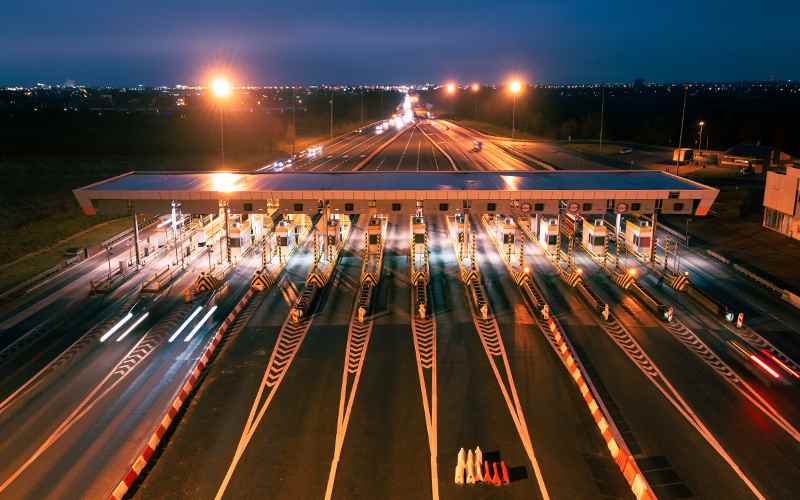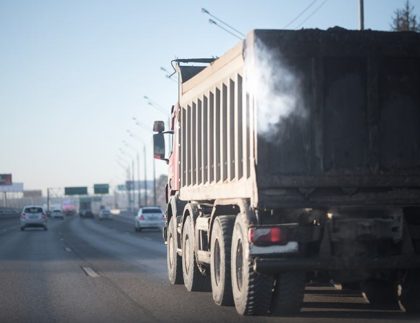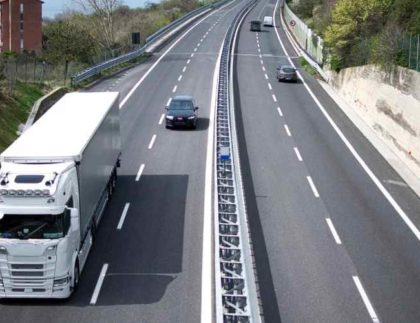

The year 2024 brings further changes and challenges for the transport industry. A recent hot topic in the industry are the new toll charges (e.g. in the Czech Republic) that we have covered on an ongoing basis on our blog. Today we will take a look at similar regulations introduced by Austria. Toll charges for trucks in 2024 result from implementing new EU regulations regarding, among others, vehicle CO₂ emission classes.
However, our coverage will not be limited to information about rates. This article will also present specific road sections where additional toll charges will be charged in Austria. Aside from this, we will discuss the manner of charging toll and the available payment methods.
Did toll charges in Austria change in 2024?
Yes – toll charges in Austria for vehicles with a permissible total weight exceeding 3.5 tons increased on 1 January 2024 and CO₂ emission levels are among the decisive factors (together with infrastructure costs and noise levels) affecting the toll amount. Similar provisions had been implemented earlier in Germany on 1 December 2023. It should be noted that all EU member states are required to introduce similar regulations by March 2025.
What are the current toll charges in Austria?
New toll charges in Austria result from amendments to the Eurovignettes directive introduced by the European Commission. These changes are intended to help reduce CO₂ emissions by 30% within the next six years.
We’ve got you covered if you are wondering what toll charges are applicable for trucks in Austria in 2024. The toll charge amount depends on vehicle emission class and number of axes. All zero emission vehicles will be classified into the CO₂ 5 emission class. In this case toll costs, when calculated per 1 kilometer of road, will be EUR 0.0538 (2 axes), EUR 0.0741 (3 axes) and EUR 0.1097 (4 or more axes).
Vehicles with internal combustion engines (including Diesel) and first registration date before 1 July 2019, they will be automatically classified into the CO₂ 1 emission class. Toll charges in Austria for a vehicle classified into this class and meeting the EURO IV standards are as follows:
- EUR 0.2568 – two axes;
- EUR 0.3557 – three axes;
- EUR 0.5250 – four or more axes.
To compare, toll charges for CO₂ 1 emission class vehicles, meeting the EURO 0 to EURO III standards, amount to EUR 0.2708, EUR 03767 or EUR 0.5540 (depending on the number of axes).
Toll charged per 1 kilometer of toll road for a EURO V vehicle, also classified into the CO₂ 1 class, is EUR 0.2408, EUR 0.3377 or EUR 0.499.
How are truck toll charges calculated in Austria?
The toll charging manner should also be mentioned when discussing toll charges Austria. The GO toll charges system is based on advanced technology, known as DSRC (Dedicated Short Range Communication). In order to use this system and manage GO toll charges, you need an OBU (on-board-unit) supporting this technology.
The selection is wide – you can use devices dedicated for toll charges in Austria, as well as the devices provided by the fuel card operators that support numerous countries as part of the EETS system.
Toll collection devices from Eurowag offer a convenient solution. They support toll charges in 23 European countries and provide 24 h support in the customer’s native language.
What are the rates applicable to various truck categories?
Detailed information on toll charges in Austria in 2024 can be found at https://go-maut.at/en/paying-the-go-toll/go-toll-rates/ Online calculators for vehicles over 3.5 tons are also quite popular – https://mautkalkulator.asfinag.at/mautkalkulator/
Are there any additional toll charges in Austria?
Toll charges introduced in Austria cover the following route sections:
- A9 Pyhrn motorway (Gleinalm and Bosruck tunnels);
- A10 Tauern motorway (Tauern and Katschberg tunnels);
- A11 Karawanken motorway (Karawanken tunnel);
- A13 Brenner motorway;
- S16 Arlberg expressway (Arlberg tunnel).
On the A12 Unterinntal motorway section, the toll charge is 25% higher than the standard toll charge rate in Austria.
Do you need a vignette in Austria?
Yes, a vignette is necessary when traveling through Austria – this applies to cars and motorcycles. Vignettes are available to purchase, for example, at www.go-maut.at. Plan your trip ahead to enjoy freedom on Austrian roads.
How much does a vignette cost in Austria?
Toll charged for cars in Austria depends on the selected vignette type:
- 1-day vignette: EUR60;
- 10-day vignette: EUR 11.50;
- 2-month vignette: EUR 28.90;
- annual vignette: EUR 96.40.
How to pay for driving a motorway in Austria?
Drivers of cars and motorcycles must purchase a vignette. Trucks with a GVW exceeding 3.5 tons can use the services of toll charge operators, such as Eurowag, or purchase a dedicated device and register directly in the GO-MAUT ASFINAG system. There are several ways to pay toll charges for trucks in Austria, depending on individual preferences and the needs of transport companies.
What are the differences in toll charges between Austria and neighboring countries?
Toll charges in Austria are operated in a similar manner to those in the neighboring countries. As mentioned, EU countries are required to successively adjust their internal regulations to the European Commission guidelines. This means that toll charges in individual countries will soon become even more harmonized. As a general rule, they depend on the following factors:
- vehicle type;
- route section;
- EURO emission standard.
Interestingly, a toll charge collection device used in Germany is also compatible with the Austrian toll charge system.
We encourage you to visit our blog and social media, where we regularly publish information on changes in toll charges, as well as latest updates on other important issues for the transport industry. Save time and stay up to date with our updates!










